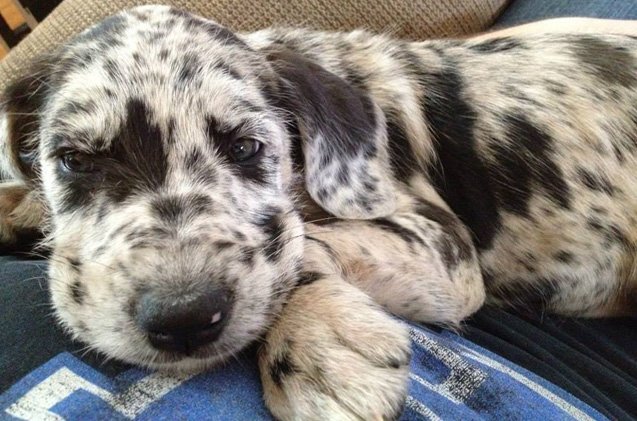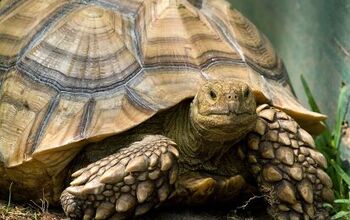Great Danoodle


About Great Danoodle
The Great Danoodle is also referred to as the Great Danedoodle, Danedoodle, Great Danepoo, and Danepoo. This is the perfect dog for families that are seeking a larger canine to walk beside them, protect them, and love them forever.
To learn more about this devoted and loving breed, and to find out if this dog would be the perfect addition to your family, keep reading to learn all about it.
The Great Danoodle is a cross between a purebred Great Dane and Poodle.
The Great Danoodle is a designer crossbreed whose origins are not entirely clear.
The Great Danoodle is a cross between a purebred Great Dane and Poodle.
Because the Great Danoodle is such a big dog, he will require a good amount of food every day in order to maintain overall health and get adequate nutrition. It is a good idea to feed your dog a high quality dry dog food in the amount of four or five cups per day. Divide this amount into two or three servings per day.
If you choose to incorporate a high quality canned dog food, you can adjust the amount of dry food that you are feeding so that your Great Danoodle won’t end up overeating and gaining too much weight.
Great Danoodles are intelligent and obedient dogs who are willing to please.
Great Danoodles are intelligent and obedient dogs who are willing to please, so they will not be hard to train. To make training even easier, you should incorporate the use of treats and use them frequently throughout the process. Also, sticking with positive reinforcement and praise will encourage your dog to listen to you.
These dogs can even be taught useful tricks, such as putting things away for you, throwing things out in the trash, and more. Repetition and consistency are the keys to success with these types of tricks.
An extra large-sized breed, the Great Danoodle weighs between 90 and 110 pounds.
Your Great Danoodle will love you so much that he may exhibit separation anxiety when he’s left home alone. Therefore, you shouldn’t bring this dog into your family if you’re a busy person or you travel a lot. But even if you’re home a lot, you may need to take steps to prevent separation anxiety by remaining indifferent and calm prior to leaving the house and upon returning home, while establishing a routine that your Great Danoodle will be comfortable with.
Overall, these extremely cute dogs are modest and polite, as well as gentle with everyone they meet. They don’t have a tendency to lick or jump on people, even though they’re very fond of being around their human companions. Once these dogs get to know you, they will love you unconditionally and remain loyal to the end.
Because of their caring and affectionate temperament, Great Danoodles make perfect family pets. They will get along well with children and other pets, and will enjoy being a part of the action.
If you are in search of a dog who will gladly keep watch over your home and let you know if anything suspicious is going on, the Great Danoodle won’t disappoint. These dogs will bark—and they will bark loudly—to alert you when necessary. But because they don’t incessantly bark, they won’t disturb the neighbors.
Like all other hybrid dog breeds, the Great Danoodle could potentially inherit some of the health problems that are common in its parent breeds. However, there is no guarantee that any individual dog will inherit these problems, and there is no way to determine what a dog’s long-term health will be.
Even though there aren’t any breed-specific ailments reported with the Great Danoodle, its parent breeds are susceptible to conditions that include joint dysplasia, epilepsy, cancer, patellar luxation, bloating, Van Willebrand’s disease, Cushing’s disease, Addison’s disease, development problems, and issues with the skin, heart, and eyes.
The Great Danoodle has an average lifespan of 8 to 13 years.
Because the Great Danoodle is a big dog, he will require exercise sessions daily. However, his exercise requirements are considered more moderate compared to the Poodle. He will enjoy going on two or more walks or jogs each day, and he will certainly like spending time in open spaces, such as your secure backyard or the dog park. This regular physical activity will allow him to maintain good muscle tone and a healthy weight.
The Great Danoodle are modest and polite, as well as gentle with everyone they meet.
The Great Danoodle is not recognized by the American Kennel Club, as it is considered to be a hybrid breed. However, this breed is recognized by the Designer Breed Registry (DBR).
A Great Danoodle’s coat could take on the characteristics of the Poodle or the Great Dane. If the coat is a lot like the Great Dane’s, it will be wiry, thick, silky, and short. On the other hand, if your Great Danoodle has more of a Poodle coat, it will be dense and curly.
The good news is that these dogs don’t shed a lot, and they don’t have high grooming needs either. You can brush your dog a couple of times a week, as well as bathe him when he gets too dirty. If your dog’s fur becomes too long, particularly between the paw pads, it should be trimmed.
Even though the Great Danoodle will grow up to be a big canine, he will be small while he’s a puppy, so he should be handled with care. Socializing and training your puppy from an early age will help him acclimate to being around children, other pets, and a variety of people. This will also ensure that your dog will be aware of his own size as he grows.
Photo credit: Calloweace Doodles; Eponaleah/Bigstock

Lisa Selvaggio is a freelance writer and editor, and our resident cats-pert, with certifications in pet nutrition and pet first aid. She enjoys producing content that helps people understand animals better so they can give their pets a safe and happy home.
More by Lisa Selvaggio

























